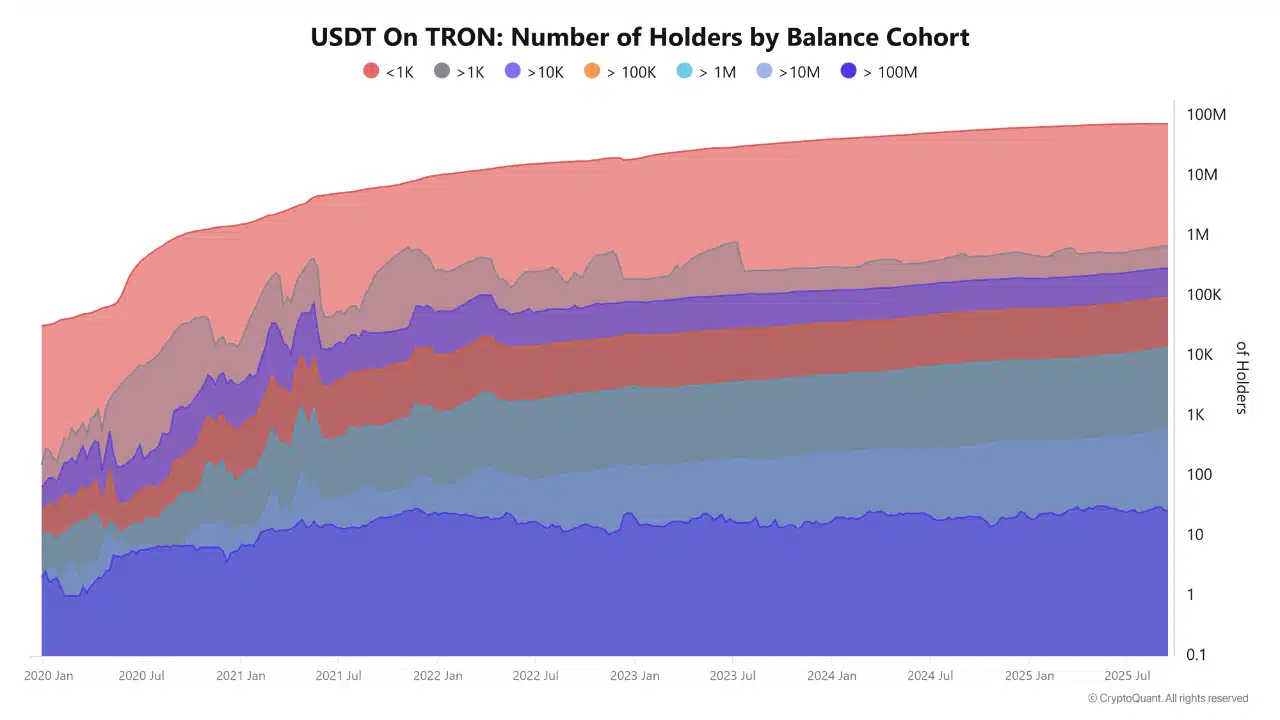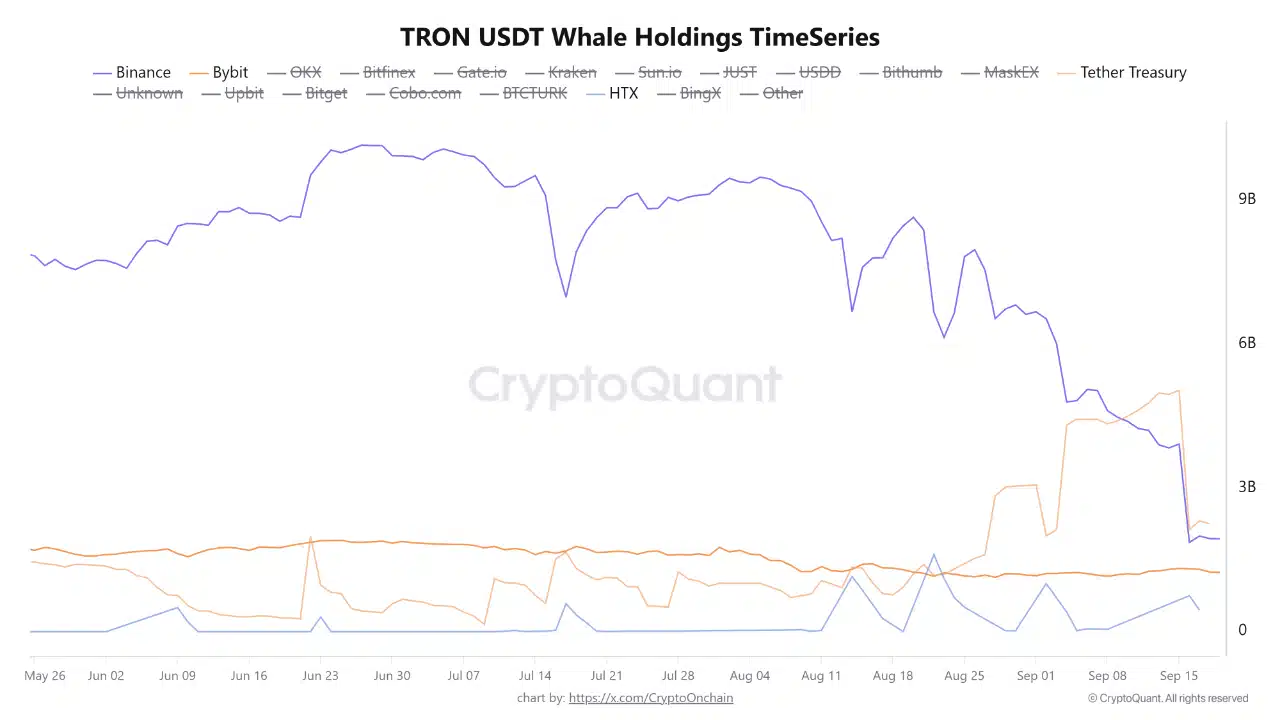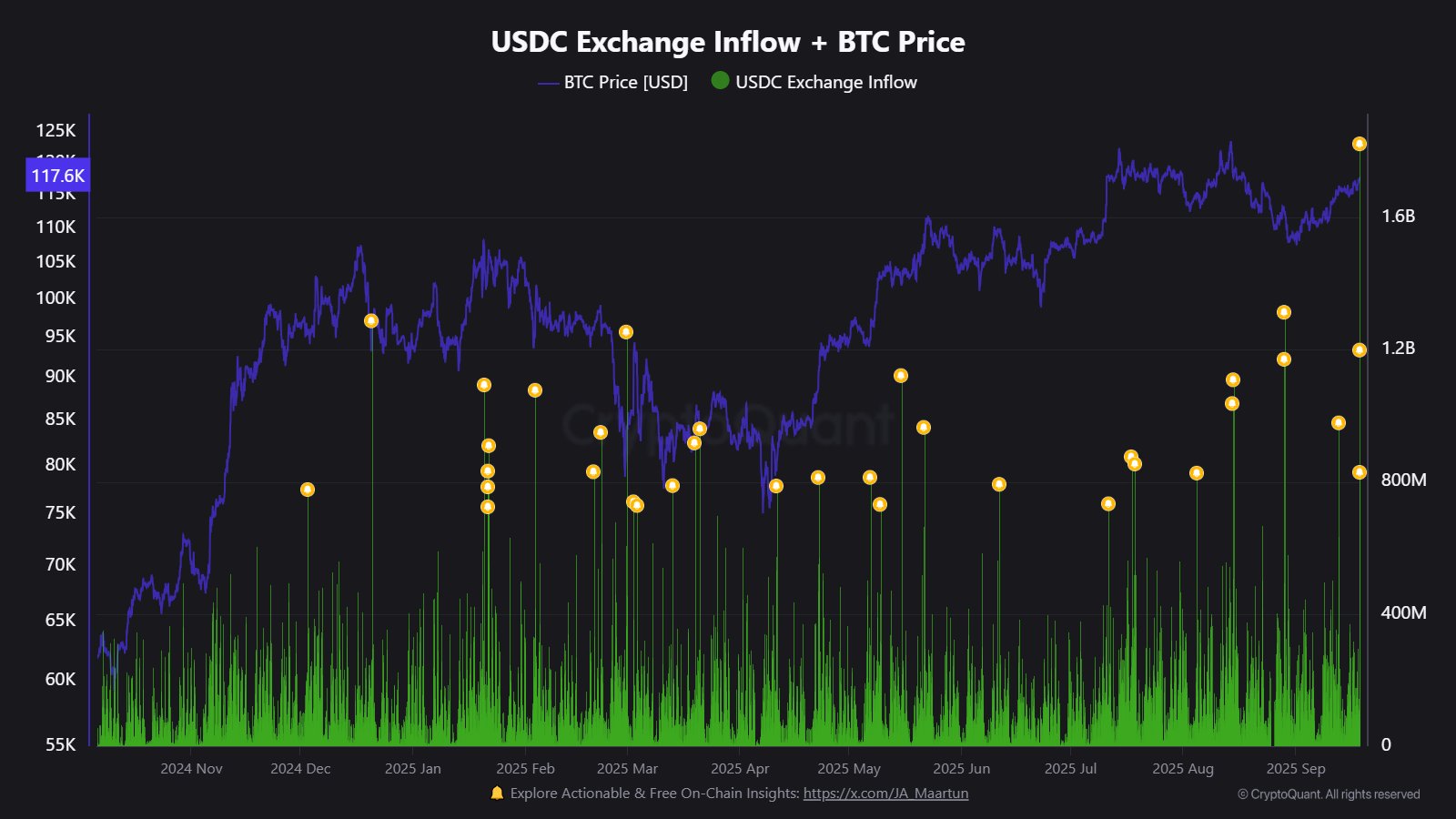USDT on TRON is shifting toward larger holders as mid‑to‑large wallets grow and exchange holdings change; Binance’s USDT reserves fell while Tether Treasury and major whales increased their on‑chain presence, and concurrent USDC inflows signal rising stablecoin liquidity that could precede market moves.
-
Whales and mid‑sized wallets increased USDT holdings on TRON, concentrating liquidity.
-
Binance’s USDT reserves on TRON dropped from near $9B to about $2B; Tether Treasury rose to roughly $4B.
-
USDC exchange inflows surged to $1.33B — the largest four‑year spike, per on‑chain data providers.
USDT on TRON sees growing whale concentration and shifting exchange reserves; read the data and next steps for traders — full analysis and key takeaways.
What is happening with USDT on TRON?
USDT on TRON is seeing a clear shift in liquidity toward mid‑to‑large and whale wallets, with holders in the 1K–100K range up ~3.51% and million+ wallets rising as exchanges reallocate reserves. This concentration coincides with major exchange withdrawals and increasing Tether Treasury balances.
How are wallet cohorts changing on TRON?
On‑chain metrics from CryptoQuant and similar on‑chain trackers show wallets holding 1K–100K USDT grew by ~3.51% recently. Wallets above 1M increased by ~3.68% and those above 10M rose ~9.34%. The largest whales (100M+) remained relatively steady, suggesting accumulation is strongest in institutional and professional trader brackets.

Source: CryptoQuant
Why did Binance’s USDT reserves fall and who gained share?
Binance’s TRON USDT balance dropped from nearly $9 billion to about $2 billion, reducing its dominance among exchange holders. That decline coincided with Tether Treasury increasing TRON holdings to roughly $4 billion since early September. Bybit held near $1.3 billion, while other custodial and institutional wallets filled the gap.
What does this mean for liquidity and market structure?
Shifting exchange reserves change how liquidity is accessed on TRON. As centralized exchange supplies fall, on‑chain liquidity can become more fragmented and concentrated among fewer, larger holders. Institutional strategies for liquidity management appear to be evolving, according to on‑chain signals reported by CryptoQuant.
When did USDC inflows spike and why does it matter?
Circle’s USDC experienced exchange inflows of approximately $1.33 billion — the largest in over four years — at press time. Large USDC deposits to exchanges often precede significant market activity because they either fund buying or provide a hedge before volatility. Traders and institutions typically monitor such inflows as leading indicators.

Source: CryptoQuant
How should traders interpret these signals?
Treat growing mid‑to‑large wallet concentrations and large USDC inflows as increased latent liquidity and potential precursor signals to market moves. Risk management remains essential: larger holders can amplify price moves when redeployment occurs, while exchange reserve shifts can change short‑term execution costs.

Source: CryptoQuant
Frequently Asked Questions
How big was the recent change in TRON USDT wallet distribution?
Wallets holding 1K–100K USDT rose by ~3.51%, wallets above 1M grew ~3.68%, and 10M+ wallets jumped ~9.34%, indicating stronger accumulation among larger holders within recent reporting windows.
Did any exchanges increase USDT on TRON?
Binance’s TRON USDT holdings decreased materially to about $2B from near $9B; Bybit remained around $1.3B and Tether Treasury increased to roughly $4B, shifting on‑chain reserve composition.
Are USDC inflows a reliable market signal?
Large exchange inflows of USDC, like the recent $1.33B spike, are commonly monitored as leading indicators of incoming liquidity or hedging activity and can precede significant price action.
Key Takeaways
- Concentration rising: Mid‑to‑large wallets are accumulating USDT on TRON, centralizing liquidity.
- Exchange reshuffle: Binance’s decline and Tether Treasury’s rise changed reserve leadership on TRON.
- USDC signal: $1.33B USDC inflows suggest sizable exchange liquidity that may precede market moves.
Conclusion
Shifts in USDT on TRON reflect evolving liquidity dynamics as exchanges reallocate reserves and larger holders accumulate. Combined with record USDC inflows, these on‑chain movements are important indicators for traders and institutions. Watch wallet cohort trends and exchange balances closely as they can foreshadow near‑term market activity.





